Хаас за Абу Даби
Ромен Грожан:
Abu Dhabi is the season finale, and it’s also the finale of Haas F1 Team’s sophomore year. After having to race brand new racecars in back-to-back seasons under two sets of very different rules packages, how does this year compare to last year?
It was much better. The car was faster, more fun to drive, more physical and more challenging, as well. Generally, the new generation of car was much more in line with what you’d expect for Formula One.
Were there any key learnings from last year that you applied to this year?
I think Formula One is one of those sports where you can’t train outside of racing. Every year is important, and every year brings more experience, so you get better and better.
Regardless of the outcome in the Abu Dhabi Grand Prix, Haas F1 Team will have surpassed its point tally from 2016 by 18 points. Are points scored the surest, most tangible examples of progress, or are there other elements of progress not everyone is able to see from the outside?
There’s much more than points. We’ve definitely made some good progress. We’re still behind what we could potentially do, that’s why the winter is going to be important for us to get everything ready for next season. When we started 2017, we were much stronger than at the start of 2016. I’m looking forward to seeing where we are in 2018 and making the big steps I believe we can.
Prior to 2017, there were those who proclaimed that Haas F1 Team’s second season would be harder than its first. Was this accurate, or were the challenges just different?
The second season is always going to be harder than the first one, but I think we’ve done very well. We started the year super strong. We then went down a little bit, which we need to address for the future. I think for as challenging a season as it was going to be, we’ve done super well.
What were the team’s challenges this year?
It was keeping the development rate going and understanding the new car. Clearly, we knew starting the season that the car from Melbourne would be fairly far from the one in Abu Dhabi. We just had to keep the development going and find the right areas to improve the car.
What were the team’s strengths?
There are a lot of them, but I think the atmosphere, and the team spirit we have, is the key to the team.
The way Haas F1 Team is set up is unorthodox, at least by Formula One standards. Does the team’s success in its second year validate Haas F1 Team’s approach?
I think so. Of course, we still haven’t reached our limitation with what we can do with our setup, because I’m sure we can be stronger and be up there. It works very well. There are a few adjustments to be made year-after-year, which Gene (Haas) and Guenther (Steiner) are doing. I’m sure the team can be very successful.
While the drivers and constructors championships have been decided, the midfield battle is still very much alive heading into Abu Dhabi. Haas F1 Team is currently eighth in the constructors standings, with seventh just two points out and sixth only six points away. Is bettering your point standing still possible?
Of course. As long as the last checkered flag isn’t down, you can always improve. We’re still very much in the match with the guys in front of us, and they’ve been struggling a little bit recently. We’re going to give it our all in Abu Dhabi and just play it like it’s the world championship.
Is there a particular moment from this season that stands out the most for you?
We’ve had some really good races. I’d say our double-points finish in Monaco was nice, and again in Japan, which was super good. The qualifying in Australia, also – we didn’t know what to expect and we got sixth.
When the season starts, Abu Dhabi seems very far away, yet here we are. Has the season gone by quickly?
It flies by. I remember going on the plane to Australia like it was yesterday. Once you’re into the season, it just goes. You don’t realize how fast it’s going.
Yas Marina Circuit is a showplace. What makes it stand out on the Formula One schedule?
It’s the show, the overall race view, the fact you start in the day and finish in the night, and the fact it’s been the finale for a few years now. It’s a very nice venue with superb facilities.
With the race beginning in the late afternoon and ending at night, how much does the track change as the air and track temperatures cool and, in turn, how does that affect tire management?
It does change a little bit, and that’s why FP2 is very important in Abu Dhabi. That’s the only session where you’re going to get the same conditions as qualifying and the race. You do need to work there. It does make a big difference if it’s sunny or dark.
Yas Marina Circuit consists of three distinct sectors. How do you find a setup that suits all aspects of the track, or do you have to compromise in one section to take full advantage of another section?
It’s always about compromise and finding the best setup to go faster. You just have to find where you can find the lap time. That’s the key. You’re never going to be perfect in every corner, but you can try to be as good as you can over the lap.
Yas Marina is a smooth track and it seems that it takes a while for the track to rubber in. As the grip level increases over the duration of the race weekend, how do you determine where the limit is from Friday to Saturday to Sunday?
The most difficult thing in Abu Dhabi are the conditions between FP1 and FP2. You only actually have one session that is representative of the race and qualifying, and that’s FP2. FP1 and FP3 are warm, therefore you have an hour-and-a-half to determine the best setup.
Do you have any milestones or moments from your junior career that you enjoyed at Abu Dhabi?
I won there in GT1 (in 2010 with Matech Competition). That was my first-ever GT World Championship start, and the first race with that team, and we won. It was a pretty good moment taking the win and leading the championship.
What is your favorite part of Yas Marina Circuit?
I quite like the first part with turns one, two and three. It can be fun.
Describe a lap around Yas Marina Circuit.
Straight line to the first corner – it comes pretty quickly – a 90-degree left-hand corner, normally in fourth gear. Turns two and three are then flat out. You go down the hill, braking into (turn) six – very tricky braking turning into six, then straight away into (turn) seven. You need to be well positioned for the hairpin going down the backstraight. It’s tricky to get the car to turn. Long straight line, big braking for the chicane, and again you need to be well positioned between the left- and right-hand side corners. Then it’s another straight line on to (turns) 11, 12 and 13. It’s a triple chicane and as soon as you exit that part you go flat out then brake for turn 14, which is a 90-degree left-hand side corner. Flat out again into (turns) 16 and 17, two right-hand side corners flat out. As soon as you go out of (turn) 17 you have to brake again for (turns) 18. (Turns) 19 and 20, you’re going under the hotel, with a tricky exit out of (turn) 20. The second-to-last-corner is good. It’s high speed in fourth or fifth gear. Then the last corner is very tricky. It’s very wide on the entry phase with the pit lane on the right-hand side. It’s not easy to find a line. Then you go as early as you can on the power to finish the lap.
As you head into the offseason, how much “off” is there, or is that just a misnomer because preseason testing tends to arrive quickly?
There’ll be a little bit of rest, but I’ve got a few challenges coming up. I’m doing a cross-country race, then another running race after the season’s done. I’ll keep myself busy. I love doing sport. I love playing with the kids and, of course, the baby is due in early January. That’s going to keep me on my toes. I will take some time off, and the diet will be a little less strict than it is during the season, but on the other hand, training is super important and I love it.
As we look ahead to 2018, how helpful is that for the first time in two years, you’re able to develop a car based on the car you’ve raced this year?
It’s going to be interesting and important for us to get it right. Now’s the time to sit down with all the engineers, make sure we’re all on the same page, and agree on what we want to do.
Кевин Магнусен: Abu Dhabi is the season finale, and it’s also the finale of Haas F1 Team’s sophomore year. After racing for an established team in Renault last year and a still very young organization in Haas F1 Team this year, how does this season compare to last season?
It’s been a really good season. In terms of results, we could’ve gotten more out of it. Performance has been there to score big points on a few occasions, but we’ve missed out due to bad luck or reliability issues. I think we could’ve had a little more to show with a bit more luck, but it’s been a really enjoyable season, and I’ve had the most fun racing that perhaps I’ve ever had.
Regardless of the outcome in the Abu Dhabi Grand Prix, Haas F1 Team will have surpassed its point tally from 2016 by 18 points. Are points scored the surest, most tangible examples of progress, or are there other elements of progress not everyone is able to see from the outside?
It’s hard for people to see what progress is being made from the outside. A lot of the stuff doesn’t pay off straight away. A lot of the stuff you improve and develop. It’s about the little steps, and when you do a thousand of them, you make progress and the benefits become visible. Each time you make a step, it’s not always visible. I can certainly see from the inside how we’re building up and improving. There’s still a long way to go and I’m happy I’m a part of it.
What were the team’s strengths?
We’ve designed a strong car. The baseline of our car is very competitive. I think we just need to try and improve our understanding of the car and our operation of the car so we can extract the performance out of it in every condition, every temperature and every track. We’ve had a few places where we’ve been very strong and stood out a bit compared to the rest of the season. That tells me the design of the car is right, we just need to exploit it better.
The way Haas F1 Team is set up is unorthodox, at least by Formula One standards. Does the team’s success in its second year validate Haas F1 Team’s approach?
Yes, I believe it does.
While the drivers and constructors championships have been decided, the midfield battle is still very much alive heading into Abu Dhabi. Haas F1 Team is currently eighth in the constructors standings, with seventh just two points out and sixth only six points away. Is bettering your point standing still possible?
Yes, definitely. We have nothing to lose going into Abu Dhabi. We just have to go for it. It’s going to be exciting.
Is there a particular moment from this season that stands out the most for you?
It’s hard to pick out just one. Naturally, I would’ve liked to have had a few more good results. I think they were definitely in the cards, but just didn’t happen for different reasons.
Yas Marina Circuit is a showplace. What makes it stand out on the Formula One schedule?
It’s a very glamorous race to go to as a spectator. It’s obviously a race that goes into the night, which makes it more spectacular. It’s the finale of the season, so it’s always a special race no matter where that is, but I think Abu Dhabi does a good job hosting it.
With the race beginning in the late afternoon and ending at night, how much does the track change as the air and track temperatures cool and, in turn, how does that affect tire management?
In terms of the race, it’s not too bad. Setting up your car, working on the setup over the weekend, it’s difficult because all the sessions are in different temperatures. What you get in FP1 is never what you get in FP2. It’s never comparable, and it’s the same with FP3 in relation to qualifying. It’s a challenging event in terms of building up your weekend.
Do you have any milestones or moments from your junior career that you enjoyed at Abu Dhabi?
I’ve only ever raced at Abu Dhabi in Formula One. I had my first test in a Formula One car there back in 2012. That’s obviously a good memory.
What is your favorite part of Yas Marina Circuit?
I’d say sector one is enjoyable, but probably with this car it’s going to be quite easy flat, less challenging. That makes sector three the most challenging now.
As you head into the offseason, how much “off” is there, or is that just a misnomer because preseason testing tends to arrive quickly?
It’s the time of year where you actually work the hardest, at least in terms of your training. You don’t have any races to prepare for, so you can push yourself a bit more and really build up your fitness over the winter. Obviously, it’s nice to get a break from all the traveling, but it doesn’t take long before you start missing racing again.
As we look ahead to 2018, how helpful is that for the first time in two years, you’re able to develop a car based on the car you’ve raced this year?
It’s going to be interesting. It’s a good feeling going into the season with the team and an idea of a car that I know from a season already. I’m very much looking forward to that.
Гюнтер Щайнер: Abu Dhabi is the season finale, and it’s also the finale of Haas F1 Team’s sophomore year. After having to build brand new racecars in back-to-back seasons under two sets of very different rules packages, how does this year compare to last year?
It was very similar. The first year we had to build a new car completely, and the team, but we had a little bit more time. This year, again, we had to do a completely new car – we already had the team built up – but we still had to optimize it. The intensity was almost the same, but when I think about our 2018 car, the intensity is the same again. I don’t think there’s a lot of change in whatever you’re doing in Formula One. Everything is always on the edge, everything goes to the last minute, and it’s all at the highest level.
Were there any key learnings from last year that you applied to this year, be it in car construction, personnel or even race weekend protocols?
You need to better yourself in every little detail. There is not one big thing that I would say we would do completely different, but there are a lot of things you optimize with hindsight.
Regardless of the outcome in the Abu Dhabi Grand Prix, Haas F1 Team will have surpassed its point tally from 2016 by 18 points. Are points scored the surest, most tangible examples of progress, or are there other elements of progress not everyone is able to see from the outside?
I think points tell something, but not everything. Even if we race the same teams, there are different levels of performance. I wouldn’t have said we’ve gotten better if we had less points, but looking in from the outside, I think we’ve made progress at all levels. We wanted to better our position, but at this moment in time we are equal, so sure we will try to get better in Abu Dhabi. I was hoping to better our end-of-season position by one spot.
Prior to 2017, there were those who proclaimed that your second season would be harder than your first. Was this accurate, or were the challenges just different?
The year-to-year challenges are different. We have to adapt as we do this. If you cannot keep up with the challenges, you shouldn’t be working in Formula One. The second year is always more difficult, but we knew this in year one. I think we successfully worked in year one so we didn’t fall back in year two.
What were the team’s challenges this year?
The challenge is just to optimize everything and find the weak spots where we can gain performance with the least amount of changes.
What were the team’s strengths?
We’ve been working together now for over a year – over two years with some people – so it’s just like we know each other better and we know what to expect. We know each other’s limits. That helps a lot when you do things. We’re well covered personnel-wise. We have enough people who are part of the team that we can lean on.
The way Haas F1 Team is set up is unorthodox, at least by Formula One standards. Does the team’s success in its second year validate Haas F1 Team’s approach?
It shows this is a model that is, at least, not wrong. If there is a better model out there – for sure, there is always something better – but our model works. What we set out to do, we’re doing.
While the drivers and constructors championships have been decided, the midfield battle is still very much alive heading into Abu Dhabi. Haas F1 Team is currently eighth in the constructors standings, with seventh just two points out and sixth only six points away. Is bettering your point standing still possible?
Absolutely. We will have a go at it. In Brazil, without the two accidents on lap one, I think we’d have had a good chance to get some points. Then again, we didn’t do it, so it’s just ‘if’ and ‘would’. We will, for sure, try hard in Abu Dhabi.
Is there a particular moment from this season that stands out the most for you?
I think finishing with two cars in the top-10 in Japan, where a lot of people had written us off already in the season. Finishing eighth and ninth wasn’t so bad.
When the season starts, Abu Dhabi seems very far away, yet here we are. Has the season gone by quickly?
Life has gone by quickly this year, not only the racing season. It’s an intense schedule. We do a lot of work and a lot of travel, and that’s not only for me, that’s for everybody on all the teams. Everybody puts in a lot of effort to put this show on the road. The season goes by quickly, and life goes by quickly.
Yas Marina Circuit is a showplace. What makes it stand out on the Formula One schedule?
First of all, it’s the last race of the season, so that makes it stand out a lot. As a facility, it’s very nice and the location is very cool. Being there is a nice end to the season. It’s warm while it’s cold everywhere else where the teams are based.
With the race beginning in the late afternoon and ending at night, how much does the track change as the air and track temperatures cool and, in turn, how does that affect tire management?
When you go into the race weekend, we know which practice sessions to count on, and the ones that don’t count toward the race, where the ambient and track temperatures are hotter than in the race. We just adapt to that.
As you head into the offseason, how much “off” is there, or is that just a misnomer because preseason testing tends to arrive quickly?
It arrives so quickly. Looking at my personal schedule, I’ve got just one weekend off between now and Christmas. The rest still involves traveling and doing things to get ready for next year. That’s part of the job. This season is nearly done, but 2018 really started three months ago. We just keep on going. I hope some of the race team, like the mechanics, who for sure work a lot harder than I do, can get a few weeks off so they’re ready to go for next year.
As we look ahead to 2018, how different is next year’s car in terms of design with the addition of the halo?
The addition of the halo is new to Formula One, but all the rest of the car stays very similar. The regulations have changed very little. Aesthetically, it’s almost nothing, except the halo and the sharkfin. I think it will look different, but we’ll get used to it pretty quick.
What are the implications for the halo in terms of weight and the car’s overall aerodynamics?
The weight of the halo is the same for everybody. On the aero development, it’s just one more part the aero group has to get into their development program to try and get the best out of it. It’s nothing too special. They’re used to the challenge. It’s just a new element introduced into their playing field. They will play with it to try to get it as efficient as they can.


















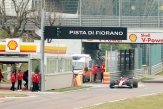
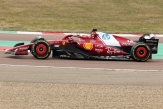
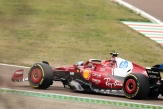
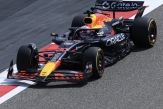
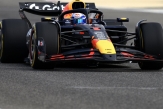
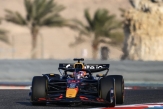

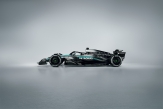
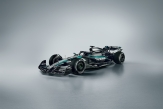
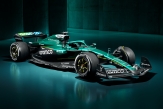
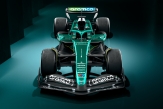
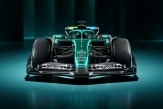
.jpg)
.jpg)
.jpg)

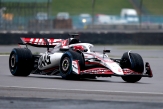

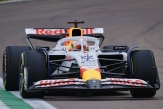
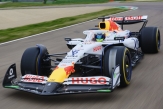
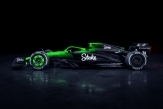
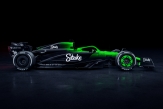

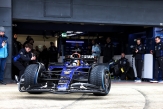
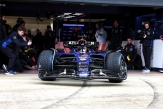
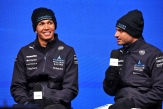

02/12/2025 от Огнян Тенчев (drJeckyll), няма коментари